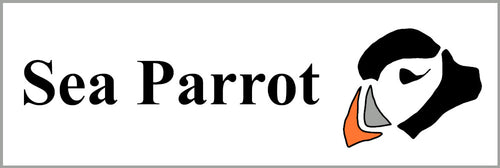Once you have completed the patchwork for the top of your quilt, it’s time to quilt the quilt!
You will need fabric for the backing, wadding (batting), large pins, a needle and thread. I usually use a backing fabric which is of similar weight to the patchwork fabric. The fabric should be slightly larger than your patchwork and can be made from several pieces sewn together, after all, who’s going to be looking at the back?! Wadding (or batting) is the thick, fluffy bit that goes in between the patchwork top and backing fabric, and the bit that makes the quilt warm and cosy. There are numerous types of wadding. They differ in thickness and composition. In the photo, you can see three types of wadding:

The white wadding on the right is made from polyester and is thick in dimension but the fibres are loose and so it is very light. The wadding in the bottom left is made of a mix of polyester and cotton. It is thin but still warm and is cheaper than 100% cotton. I tend to use the wadding in the middle which is 100% cotton. It is thin, soft and cosy. The two thinner waddings are easier to sew and maybe where you should start. If you want a big, bouncy quilt, then you could try the thicker wadding but maybe in the future when you’re more confident as it can be tricky to handle.
Cut the wadding the same size as your backing fabric. Wadding pieces can be sewn together to make a larger piece but, again, that’s probably something to try when you’re more confident. Iron the backing fabric and lay it on a flat surface. Iron the wadding flat if necessary, being careful to use the right temperature setting, and place it flat directly on top of the backing fabric. Smooth the layers out to make sure there are no bumps. Then, carefully lay your patchwork on top of the two other layers, making sure that it is as flat as possible.

Pin the three layers together trying to keep them as flat as possible. It is best to start pinning in the middle and work out so that you can smooth out the fabrics towards the edges. Some people use safety pins instead of pins and leave out the next process. I’m a bit of a purist and tend to stick to the old methods but I have been trying safety pins lately.

Next take a needle and single thread and knot it at the end. I usually use a bright colour that can be seen against the patchwork and so easily removed when I’ve finished. Again, starting in the middle, sew the three layers together using large running stitches. I tend to sew the horizontal lines first, about two inches apart, take out the pins and then sew the vertical lines after. I also always sew a line all the way around the whole quilt about 1/4 inch from the edge.

Now you have to decide how you are going to quilt your patchwork. Quilting basically means that you are going to sew the three layers together. I mostly quilt ‘in the ditch’ which means I sew following the joins, or seams, in the patchwork. I like it because it emphasises the patchwork pattern and you are not sewing over the fabric designs. I don’t like sewing over puffin’s faces! It’s quite tricky, especially if you’re like me and not that great at matching seams.

For a similar result but a bit easier, you could sew just inside the seams or a certain distance away from the seams throughout the quilt. The alternative is to quilt a pattern over the top, completely ignoring the patchwork seams. If you are going to do this, it’s best to start with something simple like diagonal stripes, horizontal waves or a spiral starting in the middle. When you get more confident, there really is no limit to what quilting patterns you could sew. To help, you could draw the design on the back of your quilt with a removable fabric marker and follow it.


Once you’re decided what you are going to do, you can start sewing. Again, try to start your quilting as close to the middle as possible. You can get a special walking foot for your sewing machine that makes quilting easier. It feeds the three layers along together very easily and smoothly. If your wadding is thin, you can just use a normal foot. Make sure you always fasten off any sewing by back stitching or sewing on the spot so that it doesn’t come undone.
Note: If you have made a large quilt, and there is too much quilt to handle for the size of your machine i.e. it’s too thick when rolled to pass between the foot and the main part of the machine, it may be better to hand quilt or get someone with a quilting machine to quilt it for you.
When you’ve finished quilting, carefully remove all the running stitches. You’re ready for the next stage which is binding.

